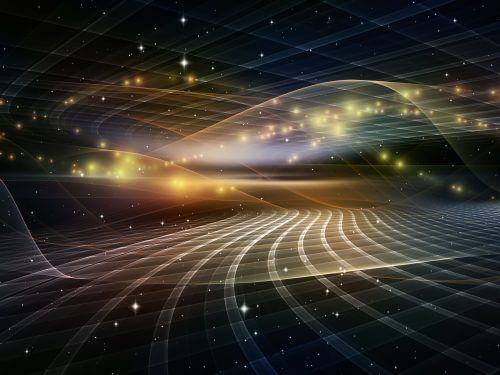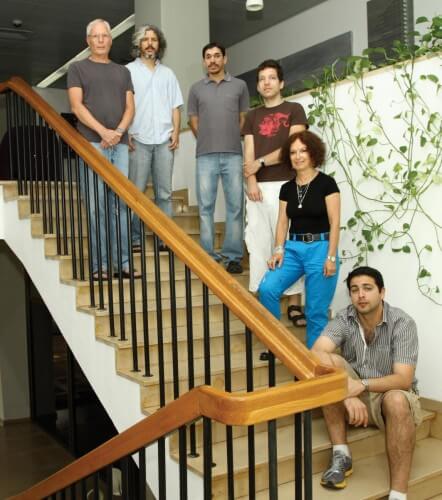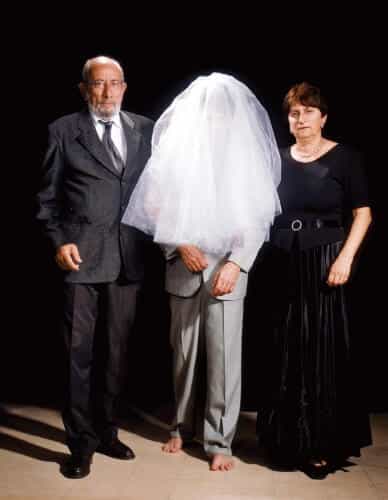About a group of scientists who decipher the secret of antimatter at the Weizmann Institute


Here is a story that begins with four separate research tracks, which unexpectedly met at one point in the Submicron Center of the Weizmann Institute of Science. It's a story about life and death, things and their opposite, stubbornness and talent, drama and physics. But above all, it is a story about the continuous effort of human beings to understand the world, or, at least, to expand our knowledge of the world, at the expense of reducing the part of the part that remains unknown.
The first track begins in 1937. Ettore Maiorna, a 31-year-old Sicilian theoretical physicist, published an article in which he developed the equations of another theoretical physicist, the Englishman Paul Dirac. Dirac, who was only four years older than Majorna, already held the Nobel Prize in Physics at the time, which was awarded to him after he succeeded - in 1928 - in showing that Einstein's special theory of relativity was consistent with quantum theory. By the way, he predicted the existence of an "antiparticle" identical in all respects to an electron, but carrying an opposite electrical charge - that is, positive. This "antiparticle", called a "positron", as well as other antiparticles were later observed, opening a window to surprising insights into the structure of matter in the universe.
In an article he published in 1937, Miorna developed the Dirac equations, and showed that it is possible that there are basic particles (uncharged) that are their own antiparticles. The particle whose possible existence he showed in the article was called "Majorna's fermion" (the expression "fermion" means that it is a particle of matter, and not a force-carrying particle such as the photon. This point is intended to play a key role later in the story).
Myorna was not a simple person, and not healthy. He published his first scientific article when he was an undergraduate student. His scientific mentor was Enrico Fermi, who later defined Miorna as "a genius on the order of Newton". But even Fermi had difficulty getting Miorna to publish works he considered important. Shortly before he published the article on the theoretical particle that bears his name, Miorna withdrew into himself, distanced himself from his friends, dedicated himself to a special diet (he suffered from gastritis), and rarely appeared in public. About a year after the publication of the article, on March 26, 1938, he boarded a ferry in the port of Palermo in Sicily. The next day, when the ferry docked in Naples - Miorna did not get off. Many assumed that he committed suicide during the short voyage, but over the years doubts have been raised, and even rumors spread that he shut himself up in a monastery. His disappearance contributed to the development of a myth surrounding the theoretical and exotic particle (his own anti-particle), whose existence he predicted, whose existence has not been proven to date.
simulated particles
The second path begins in 1982, when the American physicist Robert Leflin, who tried to explain "strange" quantum phenomena occurring in semiconductors, claimed that under certain conditions, a kind of structures of electrons are created in the electric current that function as discrete "simulated particles", each of which carries an electric charge smaller than its charge "Basic" of a single electron (the electric charge of the electron - first measured by Robert Milliken in 1909 - is the smallest free electric charge observed in nature).
According to Leflin's calculations, the "simulated particles" are created in a system where the quantum Hall effect occurs (the Hall effect occurs when electrons are placed on a surface under the influence of a strong magnetic field), and they will have an electrical charge equal to an odd fraction (a third, a fifth, a seventh and so on) ) from the electric charge of the electron.
This theory was proven for the first time in an experiment carried out by Prof. Muti Highblom and his group members at the Weizmann Institute of Science in 1997 (something that played an important role in the decision to award Robert Leflin, Horst Sturmer and Daniel Tsui the Nobel Prize in Physics for 1998). But experiments designed to examine other quantum phenomena indicated the possibility of the existence of simulated particles of a completely different type: those whose electric charge would be equal to an even fraction of the electron's charge (half, quarter, eighth, etc.). Prof. Highblom and the members of his research group also proved the existence of these simulated particles, and were able to measure their electric charge. The experiment was carried out in semiconductor crystals with the highest level of purity in the world, created by Dr. Vladimir Umansky at the Institute for Submicron Research at the Weizmann Institute of Science.
Quantum switches
The simulated particles are divided into two main groups: the mournful group, and the non-humorous group. The non-Abelian particles, whose electrical charge is an even fraction of the electron's charge, are characterized by the fact that exchanging positions between them moves the system from one quantum state to another - according to the topology of the trajectory in which the simulated particles move. More than that: the state the system will reach after the exchange depends on the order of the exchanges (that is, performing the same exchanges in a different order will lead to a different quantum state of the system). This feature does not exist in the world of the imaginary and real particles (such as an electron, photon, proton, etc.).
The meaning of this difference is that, in non-Abelian systems, local disturbances cannot affect the quantum state of the system (which changes only due to the exchange of positions of simulated particles). Therefore, non-ablative simulated particles are more resistant against environmental influences. From this it can be concluded that a future (theoretical) computer, which will be based on simulated non-Abelian particles, will be immune to interference ("noise") and will perform "topological quantum computation".
At this point, this theoretical and abstract research began to arouse the interest of scientists all over the world, as well as prominent business entities, such as the global company "Microsoft", which began to invest significant sums in research.
Small is beautiful
The third route begins in 2007, and it comes from the insight that there is a limit to the degree of precision and grammar in the details that a sculptor-artist, however talented, can express in the stone he carves a statue. This physical limit is determined by the dimensions of the most delicate tool used by the artist. Those who want to design smaller details can only do so if, instead of carving in stone, they collect tiny stones, and then build, or assemble from them, the sculpture "from the bottom up". In this method, the size of the smallest detail is limited by the size of the building blocks.
Dr. Hadas Strickman from the Weizmann Institute of Science took this insight into the laboratory, where she began to grow tiny single crystals of the semiconductor indium arsenic. After several years of effort, she succeeded in growing nanowires with a perfect crystalline structure (confirmed by Dr. Ronit Popovitz), which are so thin that, from a practical point of view, the electrons flowing through them move in one-dimensional flow paths.
Situations
The fourth track was launched in 2001, when Dr. Alexey Kitaev, who was previously a visiting researcher at the Weizmann Institute of Science, proposed a way that would make it possible to use simulated uncharged non-Abelian particles, which have the properties of Myorna particles, to create topological quantum memories. It is important to understand: this is not a Majorna fermion, which is a matter particle per se, but rather simulated, complex particles, which are, in fact, a kind of "states" that are also their own "anti-states".
A few more years passed until, in 2010, Prof. Yuval Org and his research partners, Prof. Felix Van Ofen from the Free University of Berlin and Prof. Gil Raphael from the California Institute of Technology, Caltech, developed a theory that showed how it is possible to create quantum states in which simulated (complex) particles exist characterized by in the properties of Myorna particles. They proposed to implement the theory in a method that includes several relatively simple components, and does not require strong and complex interactions between the electrons. This method is based on one-dimensional nanowires of semiconductors, which are placed near superconductors, and on the activation of a weak magnetic field along the nanowires.
The tracks converge
Here the tracks converged. Prof. Yuval Org and research student Yonatan Most suggested using the one-dimensional wires grown by Dr. Hadas Strickman, and placing them near superconductors. Thus, at the ends of the threads, simulated, complex particles will be created, which are characterized by the properties of Myorna particles. That is, they will be the anti-particles (or anti-states) of themselves. Prof. Motti Hayblom, the post-doctoral researcher Dr. Anindia Das, and the research student Yuval Ronan, designed and built the complex experimental set-up, and within a few months they were able to characterize quantum states that correspond to the expectations of Majorna states.
Shortly before that, the Dutch physicist Leo Copenhoven, from the University of Delft, reported a similar result. "If these results do indicate the existence of Majorna states", say Prof. Highblom and Prof. Org, "then they advance us another step in the long journey to research the principles of quantum computing."
Open question
But where are the particles of Myorna? The quantum states observed at the Weizmann Institute and the University of Delft do indeed arouse great excitement, but being simulated, complex particles, they are not the "real" particles of Majorna, which are supposed to be fermions, i.e. particles of matter per se.

If so, do real Myorna particles even exist in nature? The physicists hope that the answer to this question is positive. One of the natural candidates for the role of Majorana particles is the neutrino. This possibility opens the door to solving one of the biggest open questions in physics: assuming that matter and antimatter were created in equal amounts in the Big Bang, why do we see only matter in the universe we know? Where did the antimatter go?
The scientists say that if the neutrino is a Majorna particle (that is, it is its own antiparticle), then this may be related to the existence of some force (which has not been observed to date), which differentiates between matter and antimatter, and is the one responsible for the disappearance of the antimatter from the universe

7 תגובות
interesting
The Weizmann Institute magazine is the material.
Whoever wrote the article is anti-material.
The article does not explain anything to those who did not know and understand the subject from the beginning
It's more like the plot synopsis and chronological order detail but without a single real physical explanation
And those who did not participate in a previous lesson will not understand anything
It's an interesting topic and a shame
I disagree with the statement at the end of the article and claim that what disappears is the matter and what remains is the anti-matter.
interesting. This field sounds like the closest thing to science fiction.
exciting.
what picture! Real brilliance and the only thing I think I understood in the article.